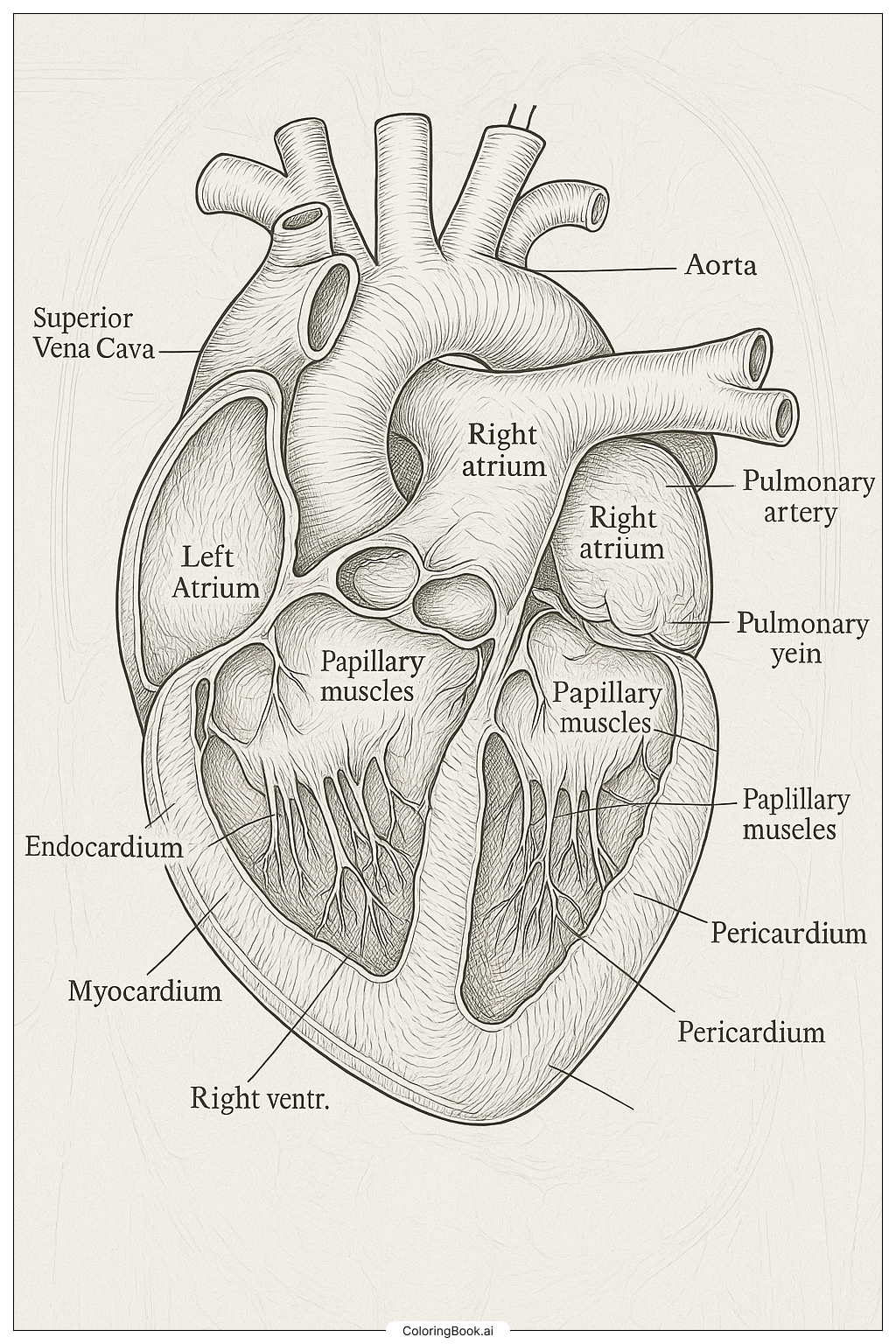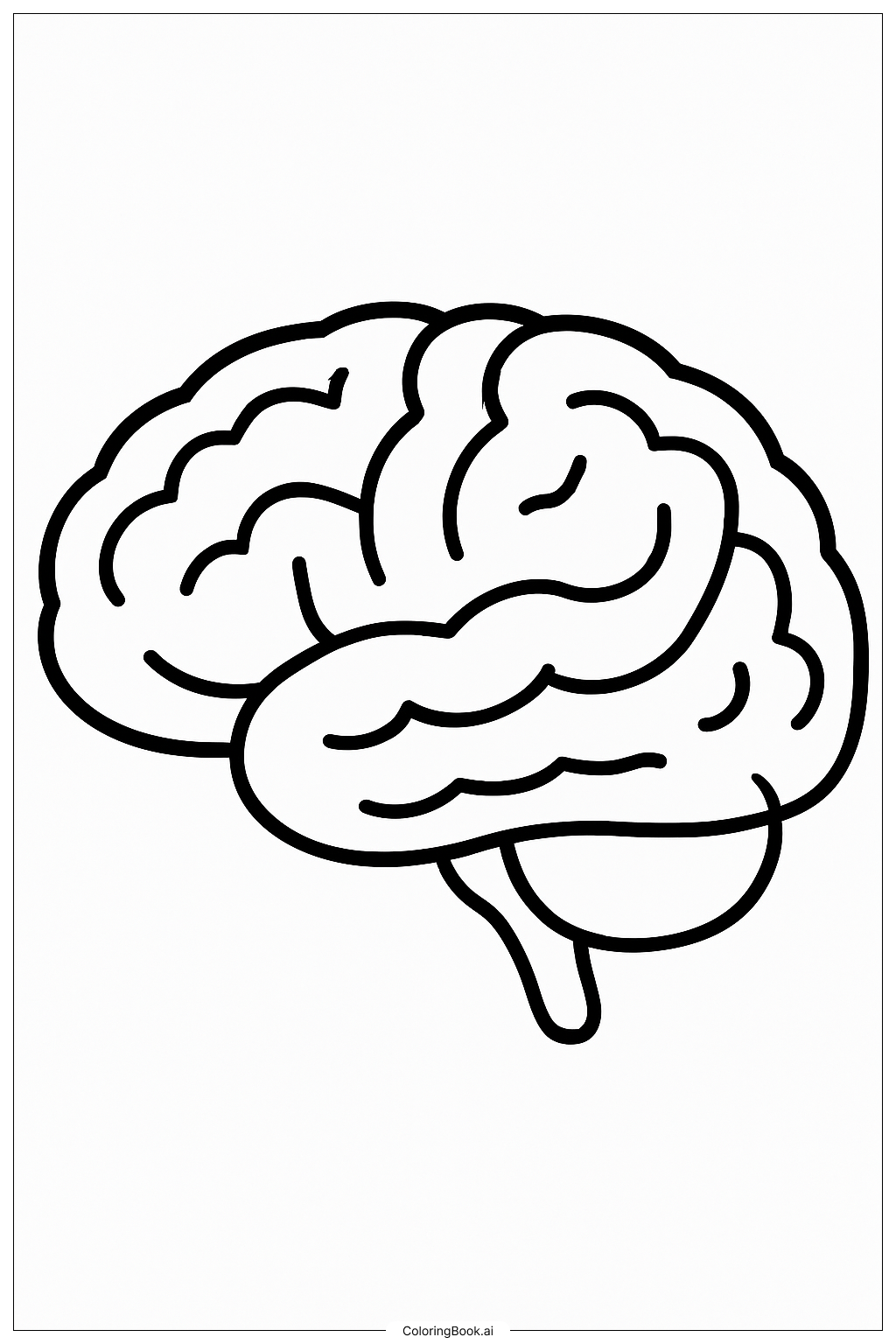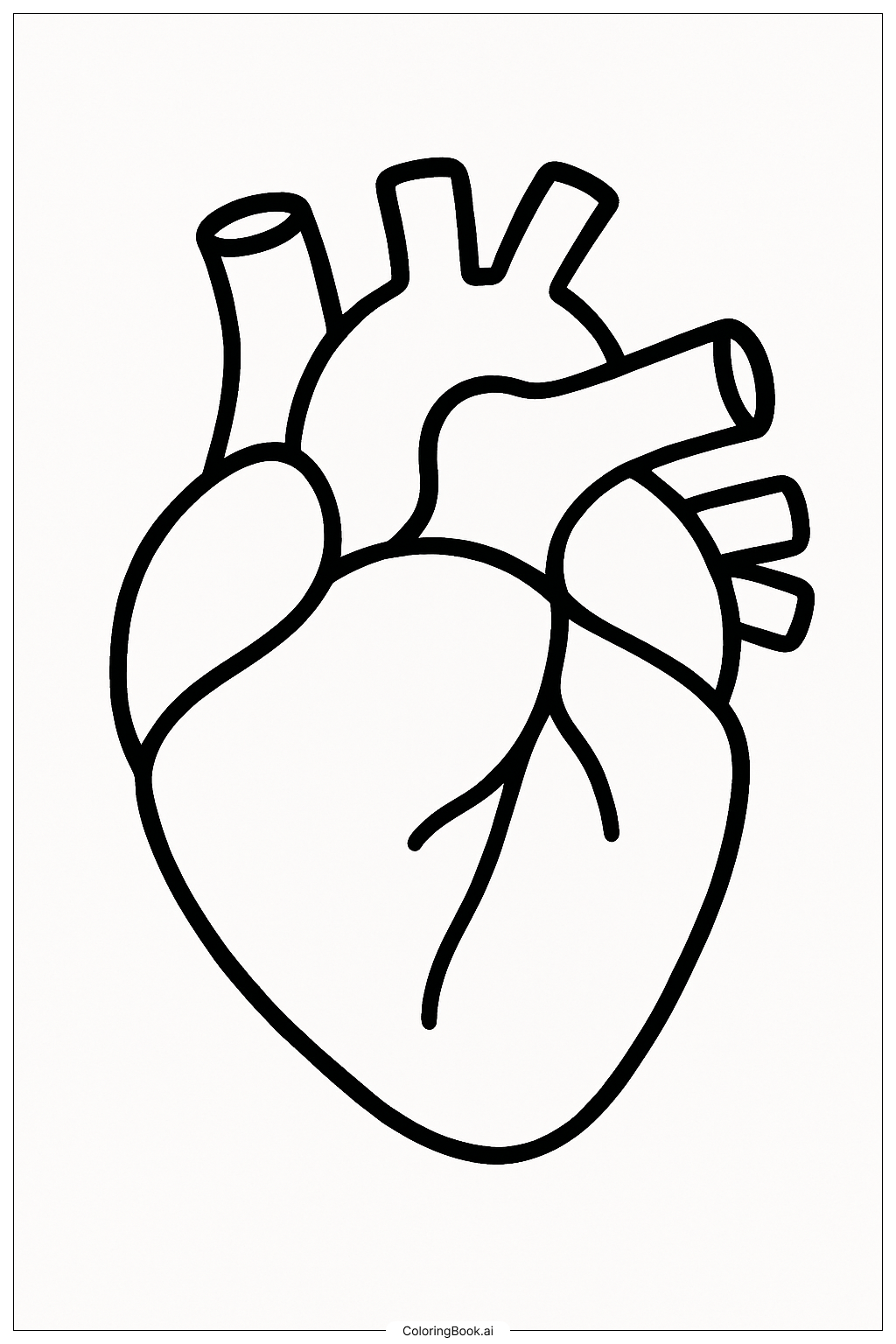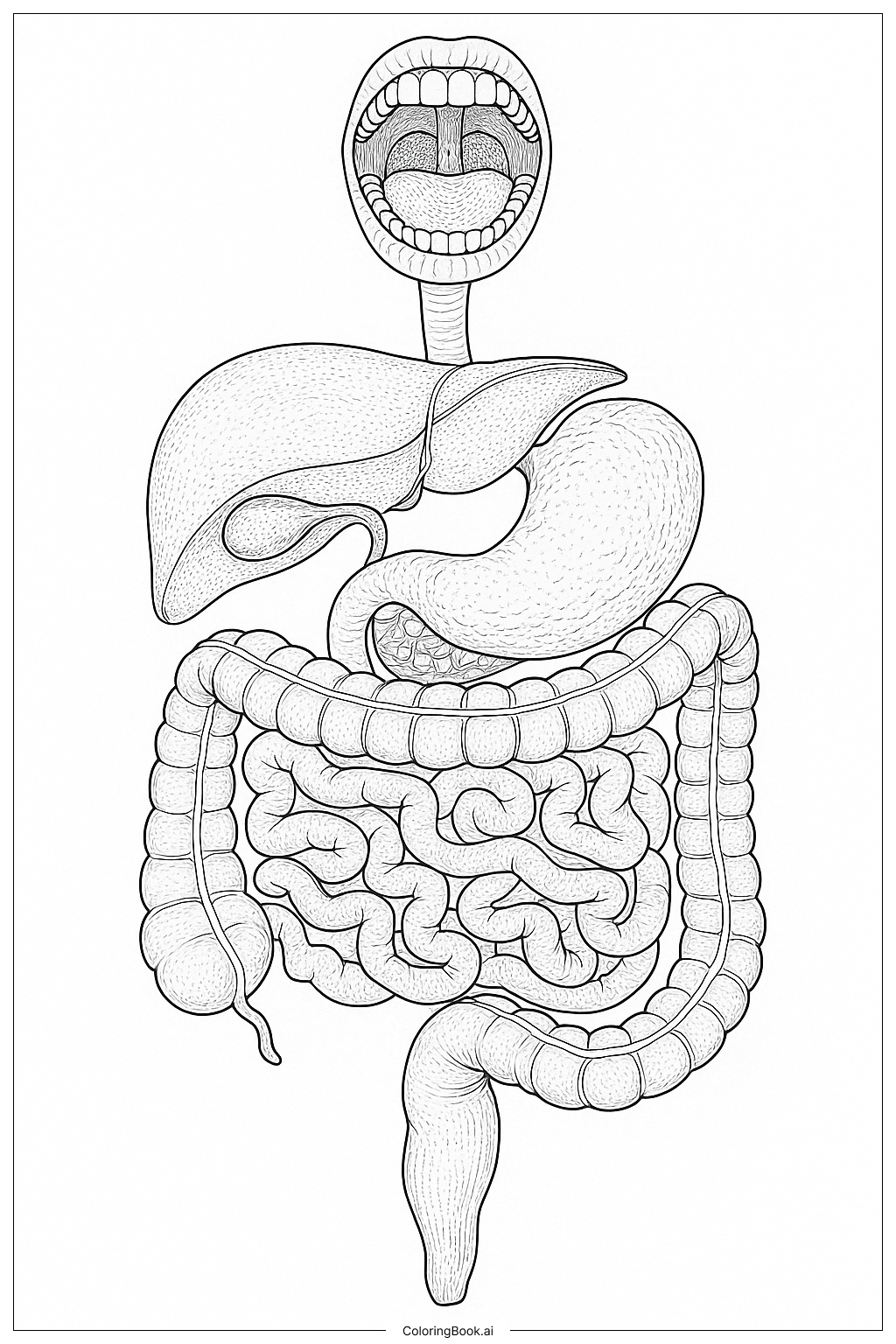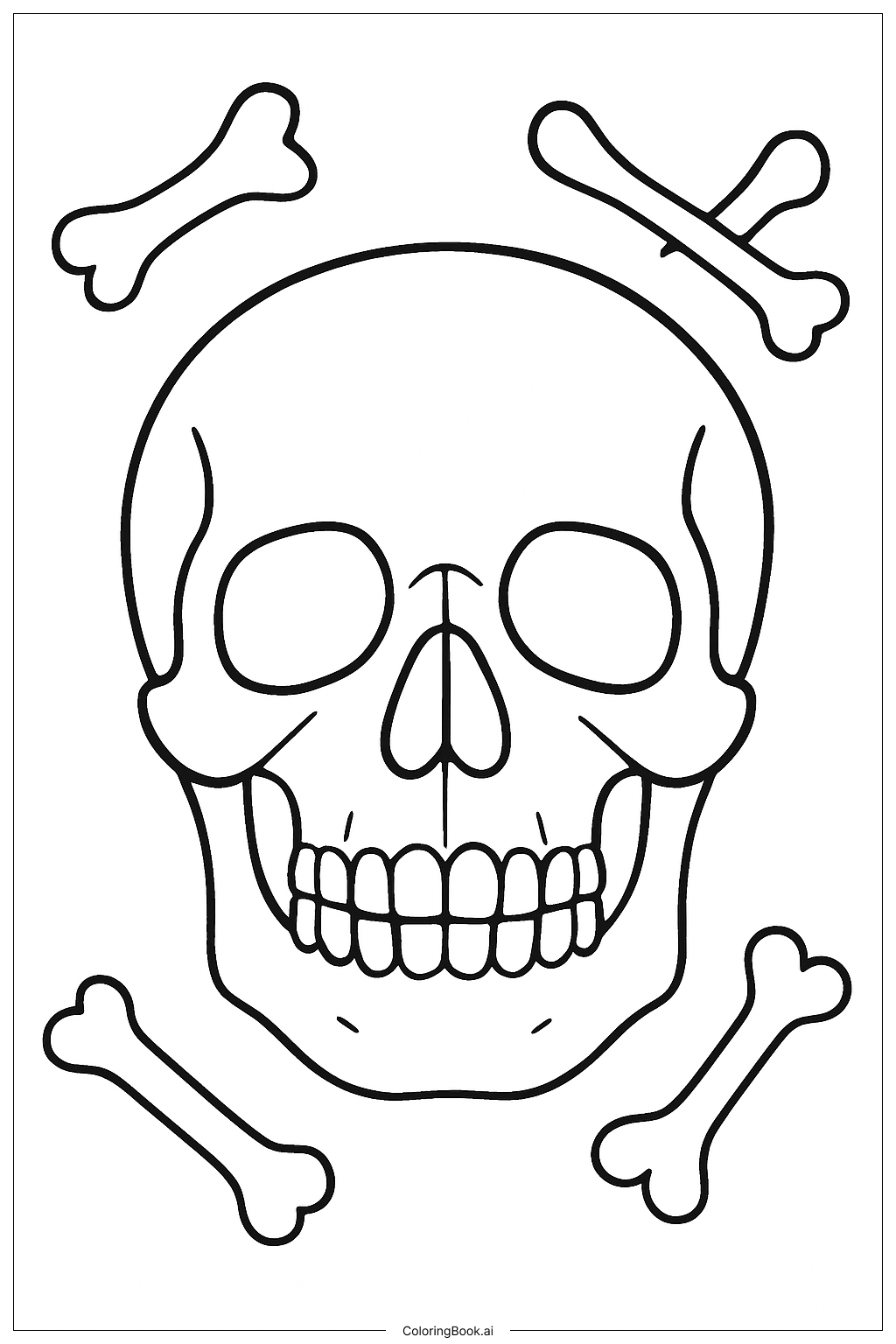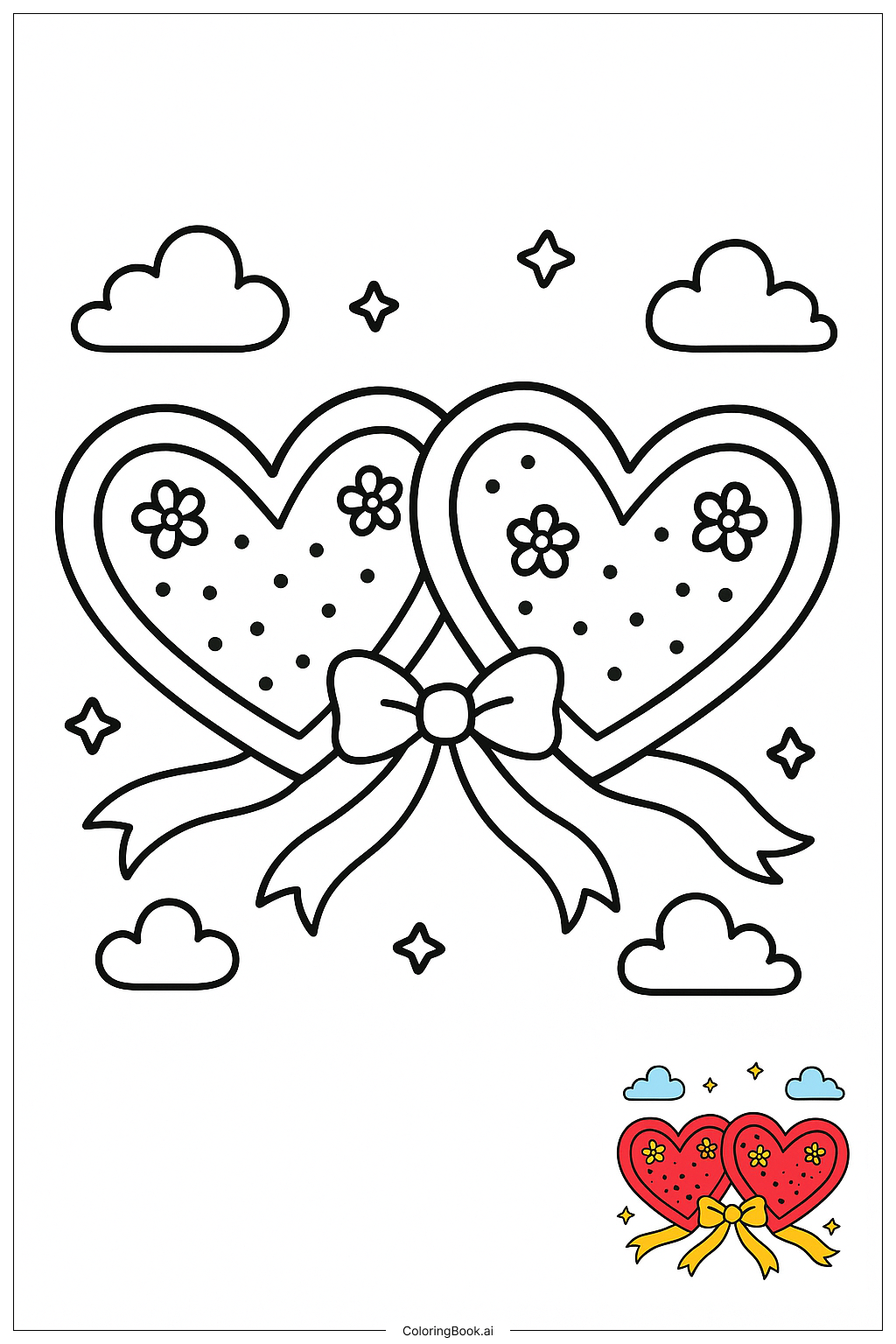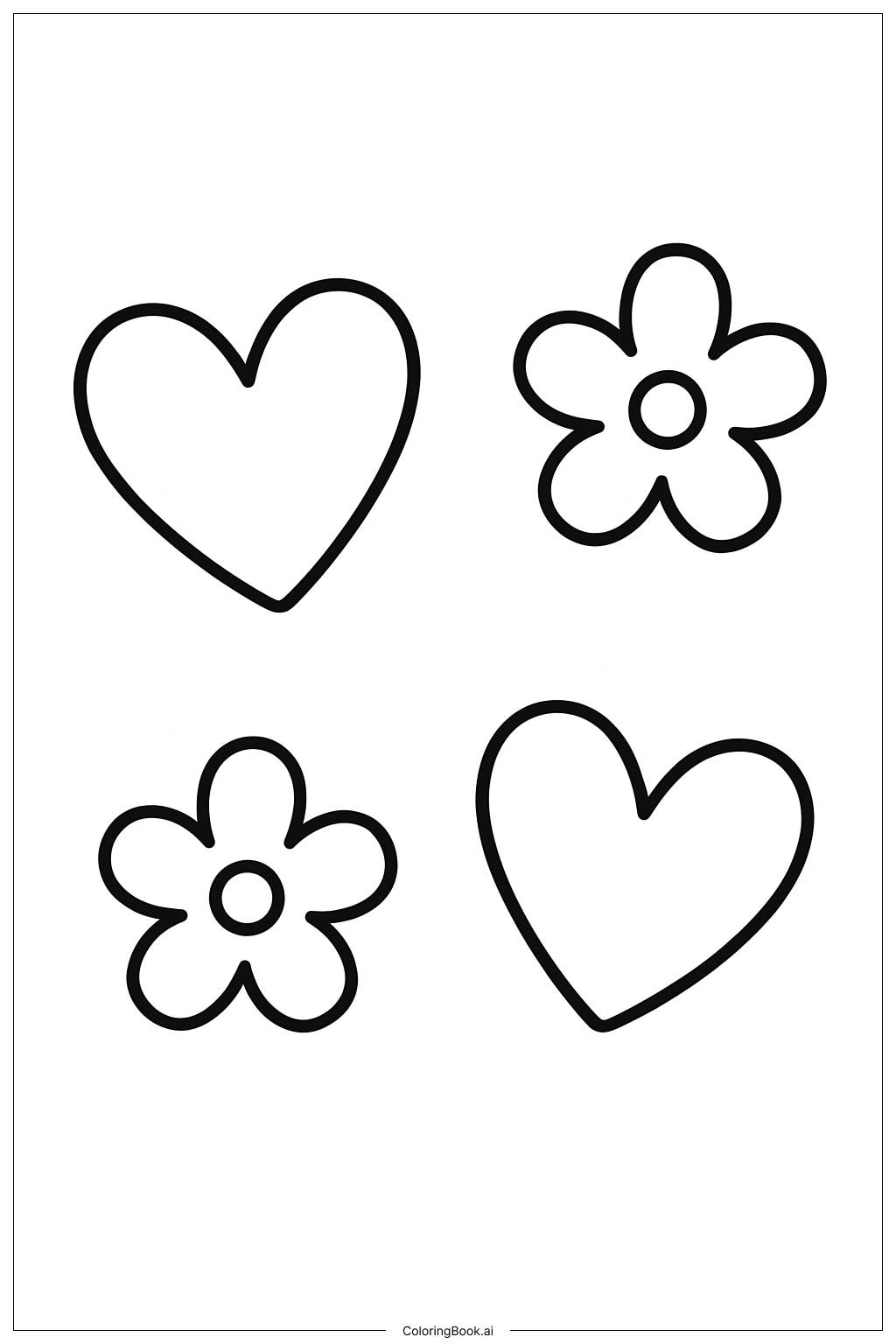Coloring tips: How to color Detailed Heart Cross-Section Anatomy coloring page well?
Use red and blue tones to show blood flow differences: red for oxygen-rich blood areas and blue for oxygen-poor areas. Color the atria and ventricles in different shades to make them stand out. The blood vessels like the aorta and pulmonary arteries can be bright red or blue. The heart muscles can be colored in pink or light red, and the outer layers in softer colors like pale yellow or beige. Use colored pencils or markers for neat coloring inside the small muscle structures.
Coloring challenges: Which parts are difficult to color and need attention for Detailed Heart Cross-Section Anatomy coloring page?
1. Small Details: The papillary muscles and heart walls have fine lines that are tiny and hard to color carefully.
2. Many Labels: The different parts are labeled close to each other, which might make it tricky to add color without overlapping.
3. Shape Complexity: The heart's curved and overlapping sections require controlled coloring to avoid mixing colors.
4. Vessels Similarity: The pulmonary artery, vein, and aorta look alike in shape, so using different colors consistently is needed.
5. Layer Depth: Showing the depth of the myocardium, endocardium, and pericardium takes careful shading.
Benefits of coloring books: Advantages of drawing Detailed Heart Cross-Section Anatomy coloring page
Coloring this detailed heart image helps kids learn about the anatomy of the heart in a hands-on way. It improves focus and fine motor skills as they color inside small spaces. Using different colors for parts helps with memory and understanding how the heart works. It encourages curiosity about biology and health. This activity also makes learning science fun and creative.
